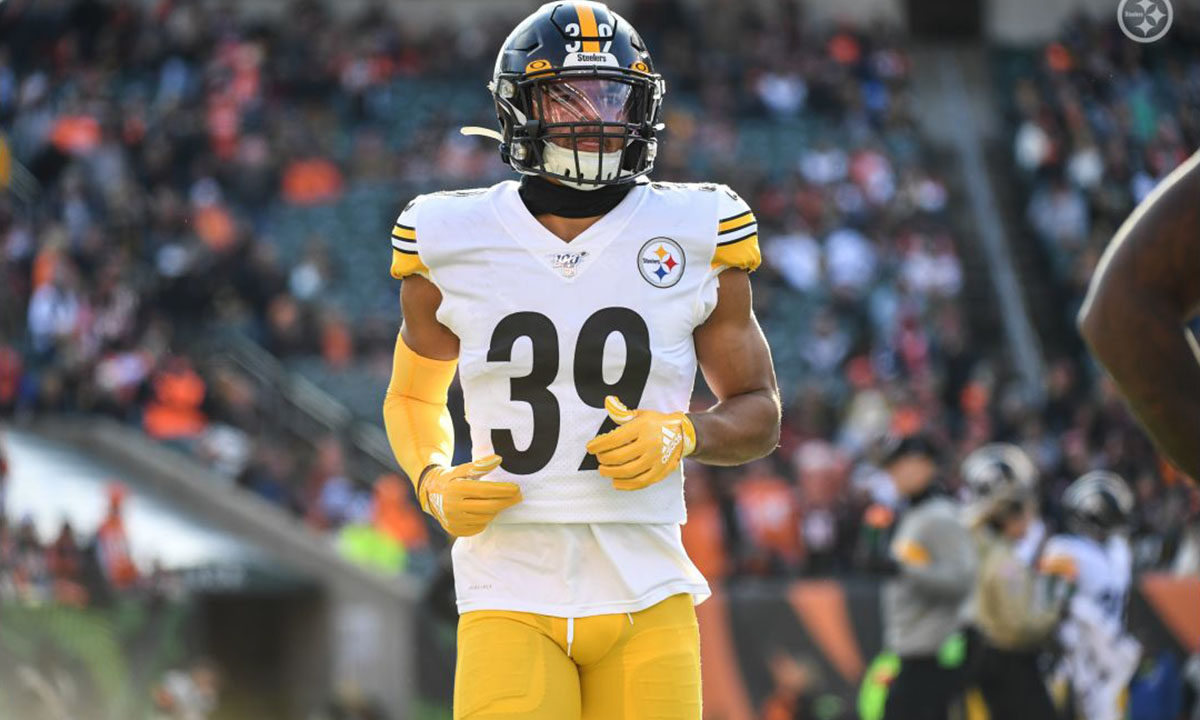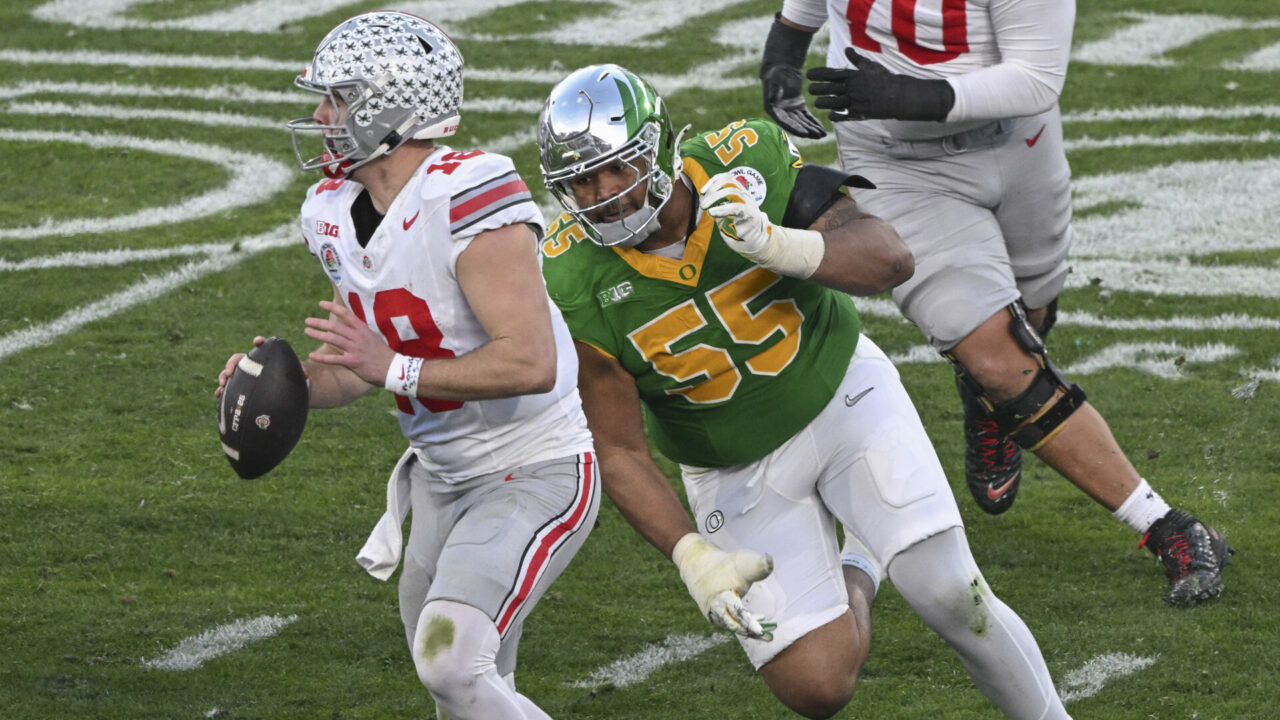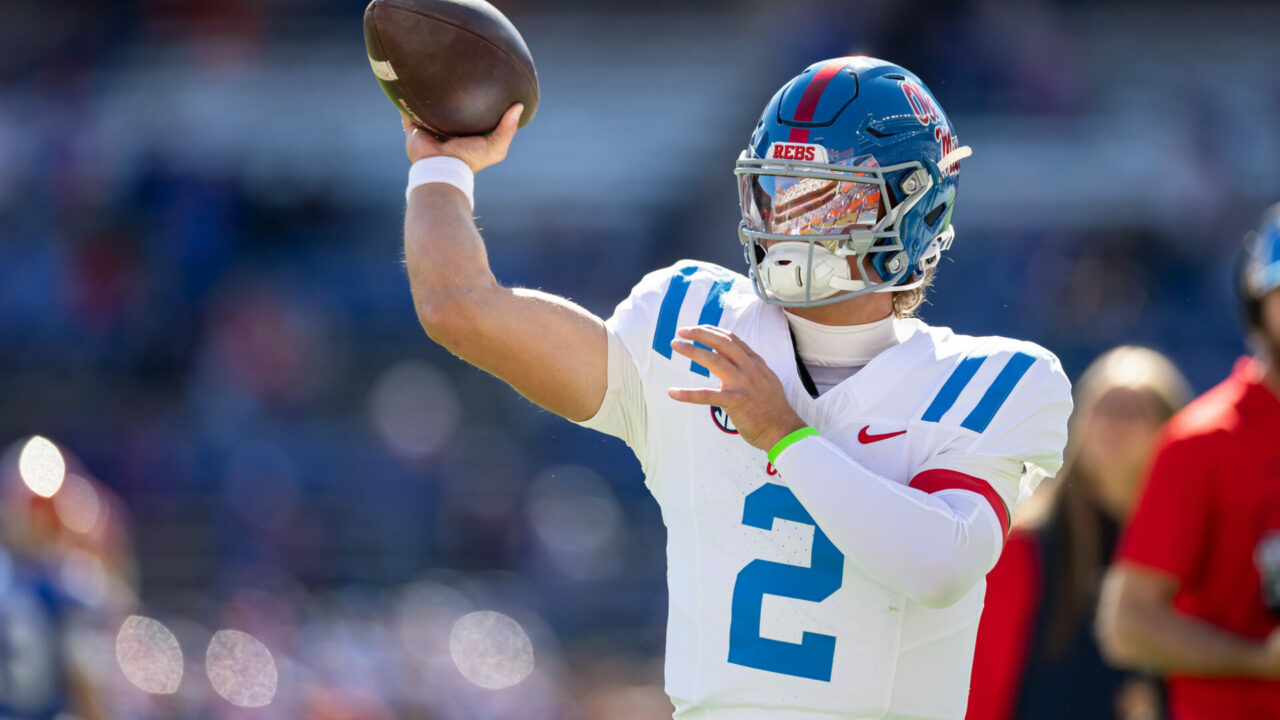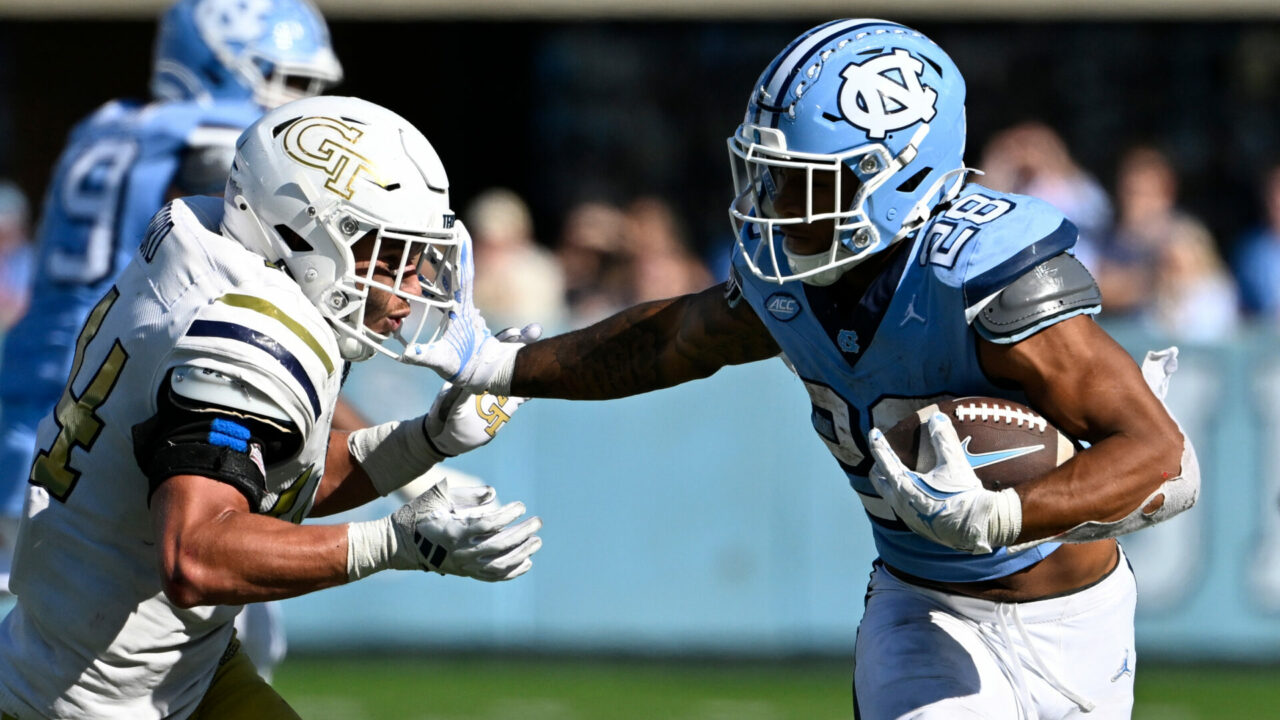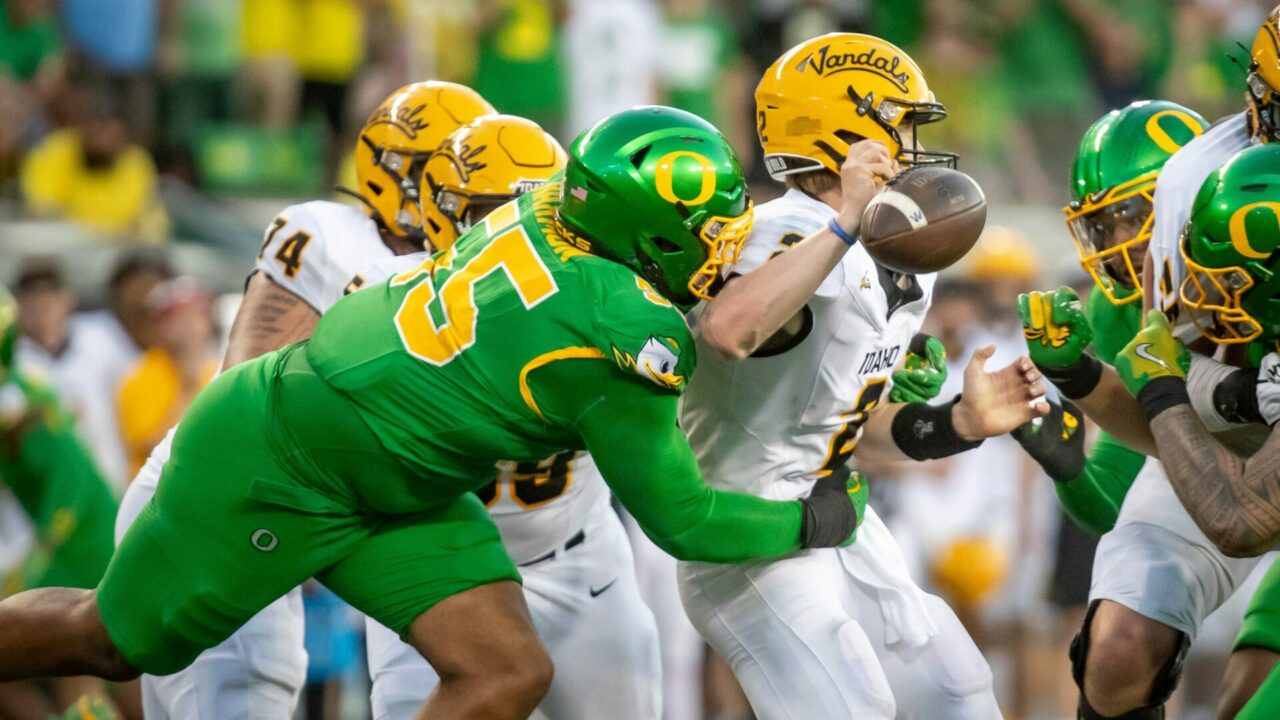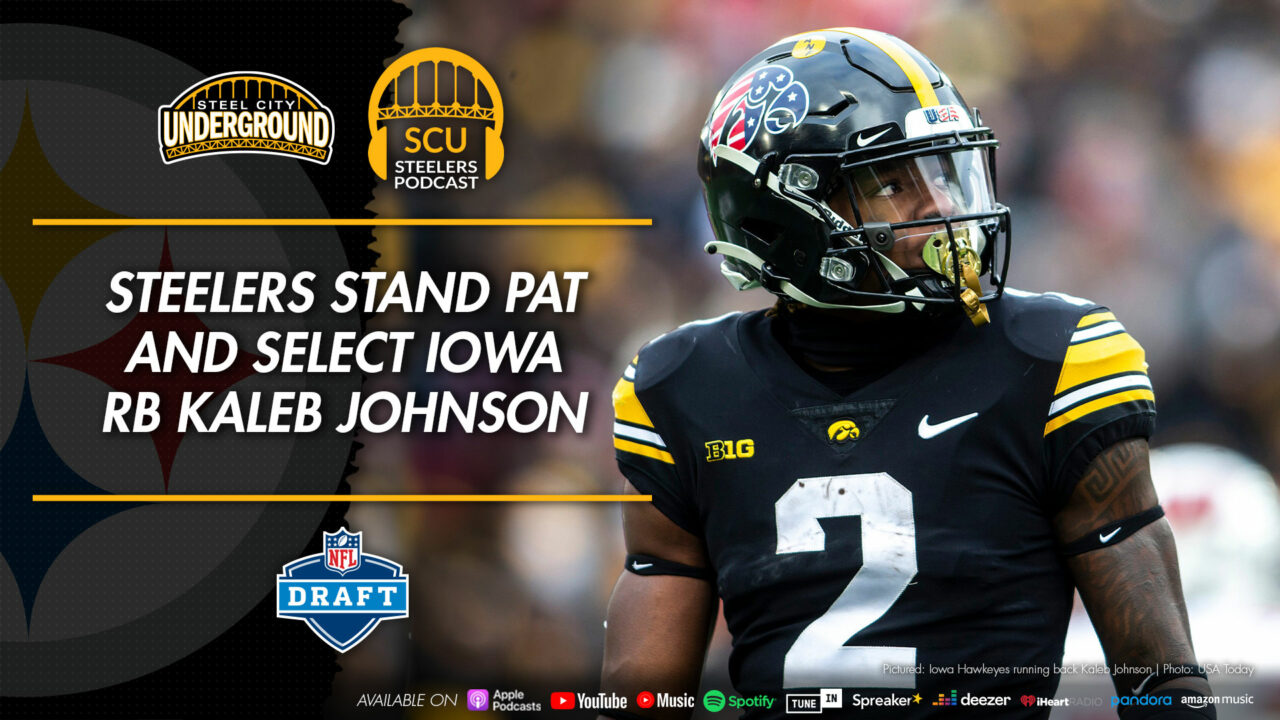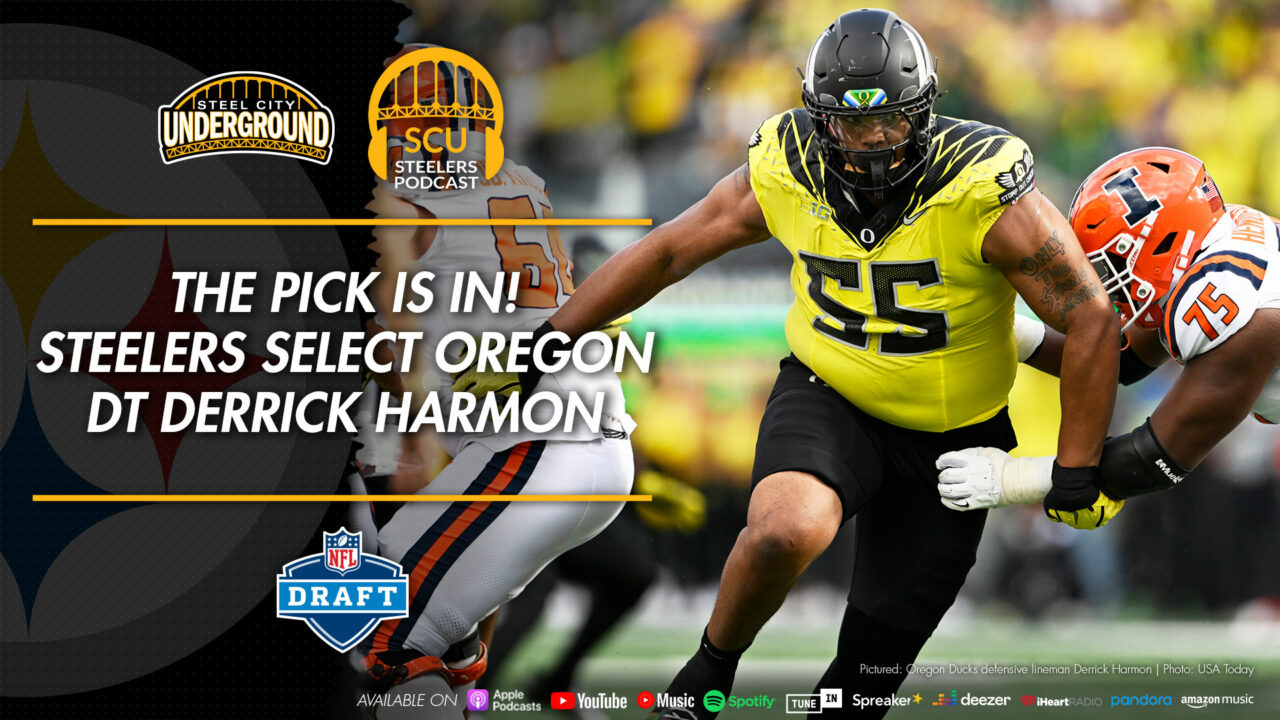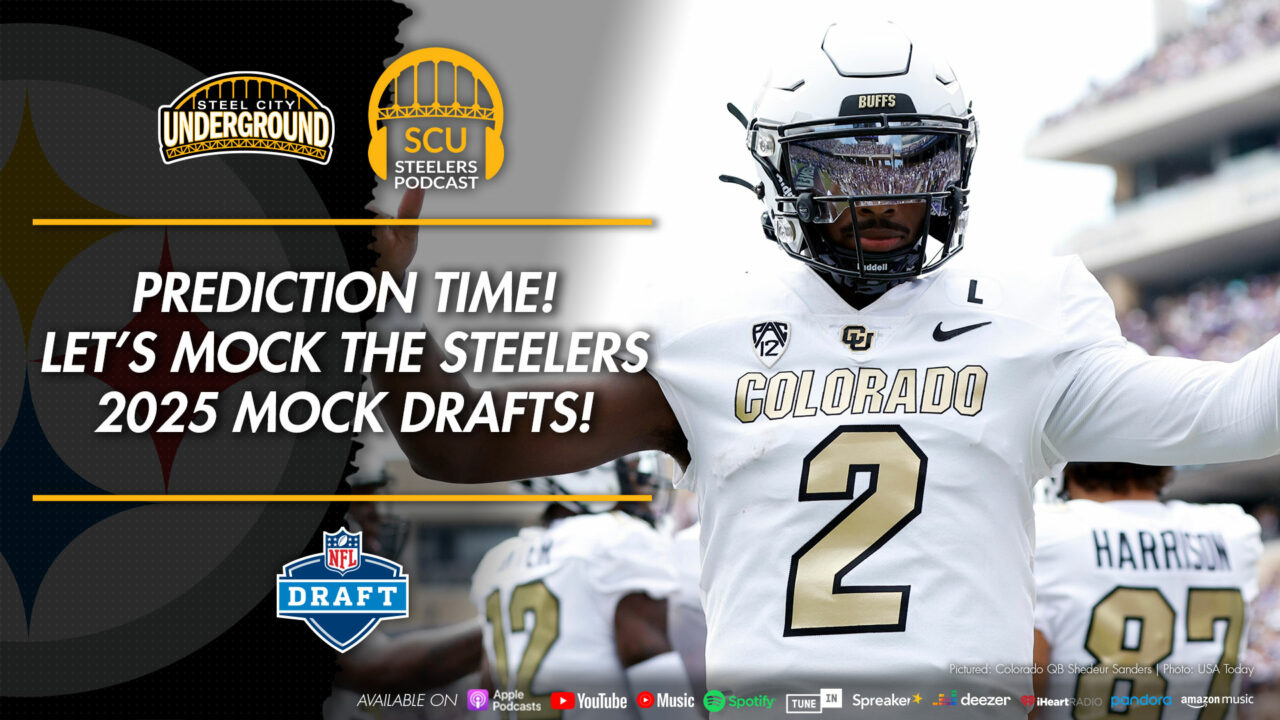Steelers draft grades mean even less when you don’t have picks
With the NFL Draft in the rear-view, and every Tom, Dick, and Harry offering their paper opinions on how each team “graded” is almost maddening: especially when it pertains to the Pittsburgh Steelers draft class.
First, understanding how the “experts” grade a draft class is as important as seeing their final grade. Draftniks have been abuzz for close to a year, doing whatever film study, interviews, and more to scout potential NFL prospects out of college. At some point, they assign a value to that player: i.e. what round they may be drafted in.
As soon as that player is chosen, whether it’s the round they picked or not, the draft expert is then validated or vehemently espouses how that team who took the player “screwed up” the pick.
Much of that is, in fact, self-validation. Nothing could be further from the truth when the people paid the big bucks to make these decisions largely disagree with the Internet – which is then only seen when the actual selections are made on draft day, as each franchise sends smoke screens in an attempt to throw off other teams and land “their guy”.
Another common misconception which occurs is team needs. What someone like ESPN’s draft expert Mel Kiper Jr. feels is a need, versus what the Steelers believe are needs, are two different things.
Take for example, Kiper stating the Steelers needed a quarterback in this year’s draft. He felt last year’s quarterbacks were underwhelming; and they were, but it’s far from just their play which hurt an offense plagued with injuries to other star players at key positions.
That’s where the disagreements come from and where fans get skewed in their own opinions – because the fans are only going to hear one side of the argument. A team, like the Steelers, won’t come out and openly say if they were interested in Player A in Round X.
It just doesn’t work that way. Furthermore, you won’t hear about those situations until many years later, such as in Bill Cowher’s A Football Life where he mentions that he wanted to draft Philip Rivers instead of Ben Roethlisberger.
Therefore, the draft grading is even murkier water to see clearly until hindsight becomes 20-20 vision.
Of course, that’s not the only thing which is impacting the Steelers 2020 draft class grading. Kiper, himself, admits that Pittsburgh’s 2020 first round draft pick trade with Miami for Minkah Fitzpatrick “saves this class from a C.”
Do you count last year’s trades?
Is counting last year’s moves fair? I’m not sure that it is.
There’s definitely a tale of two drafts here, as with only six picks in the 2020 NFL Draft, the Steelers weren’t likely to grade out as a top class anyway. The lack of the first round pick left them without a choice until pick 49 overall.
They didn’t pick again until 102: 53 selections later, also due to a trade in 2019, in order to move up to select LB Devin Bush.
That move isn’t calculated as part of the overall grade, but some are saying the Minkah one does? Which is it?
Minkah Fitzpatrick was an All-Pro last year. If you believe a selection, in this case via trading a first round pick, is going to be considered among the best in the league, would that not merit a draft grade higher than Kiper’s B-?
Did he forget about the move to get Bush? Kiper considered him to be one of the top athletes in the entire 2019 draft class and even gave the Steelers a B+ grade for their overall haul last season.
If that inconsistency in thinking isn’t enough, and we’re going to talk about draft grades based on player trades, Bush has to be partially considered, right?
How “good” can you grade picks 49 and 102 on paper?
Let’s take this one step further to prove how idiotic grading can be, even if it is a prediction: on paper, how high of a grade would you assign picking 49th and 102nd overall? Don’t even assign names: just consider random values.
According to Pro Football Reference’s draft values chart (a generic chart with “point” values assigned to each pick – often used to calculate if a trade is of “fair value”) shows that picks 49 and 102 for the Steelers equal 410 and 92 points respectively, or 502 points total.
If you were to trade those two picks for one of equal value, the highest the Steelers could move up in this year’s draft was with the Houston Texans at pick 40, which is valued at 500 points.
That’s right: a whopping nine spots.
Anything else is of more value than those two Steelers picks and half of the first round has a value twice that or more.
Does the Nth player at a position matter then?
So, what is a pick “worth”?
Critics are quick to mention that Chase Claypool was the 11th wide receiver off of the board, but what did they expect? Any other position was going to be X of Y, since the Steelers weren’t gifted one of the top picks in the draft.
They weren’t going to get the top receiver.
They weren’t going to get a top quarterback.
And if they went the route many anticipated, at running back, they’re looking at what became the fourth or fifth-best option available with Florida State’s Cam Akers or Ohio State’s J.K. Dobbins.
The guessing game for teams, and the risk, is whether or not that 11th receiver taken is a bigger contributor (or player) than the fourth-best back – and who will contribute more or when?
Obviously, edge rusher was something pointed as a need by many draft gurus, yet when the Steelers grabbed Alex Highsmith, the seventh such outside linebacker taken in the draft, there were gasps.
This was at pick 102, at the bottom of the third round, when no other outside linebacker was taken in the first round and only one was selected (pick 60, New England), in the second. Some fans are upset over the pick because they had never heard of the player coming out of Charlotte, yet he was high on a lot of draft boards – Mr. Kiper included:
My favorite 2020 picks by round:
1. CeeDee Lamb, WR, DAL (17)
2. Xavier McKinney, S, NYG (36)
3. Alex Highsmith, OLB, PIT (102)
4. Ben Bartch, OT, JAX (116)
5. Justin Strnad, OLB, DEN (178)
6. James Proche, WR, BAL (201)
7. Eno Benjamin, RB, ARI (222)https://t.co/xzrtPy6hIY— Mel Kiper Jr. (@MelKiperESPN) April 27, 2020
Anthony McFarland Jr. out of Maryland was the thirteenth running back taken in the draft, in the fourth round. Some are quick to hail him as a great player while others feel he’s a wasted pick.
The disparity is mind-numbing and why I don’t get involved with grading drafts until years down the road. I shouldn’t have to remind Steelers fans, especially, how some late round or undrafted players have turned out.
Donnie Shell, who went undrafted in 1974, is entering the Hall of Fame.
Sticking with running backs, an undrafted man by the name of Willie Parker made his mark nearly a decade ago.
Alvin Kamara, Kareem Hunt, and James Conner were all third-round picks in 2017 who found success in the pros too.
Final Thoughts
Therefore, it’s hard to gauge the quality of players versus their draft position at this time. There’s also the fact of higher round picks having a longer pro career on average too, especially when scheme and situation factor heavily into their ability to make a roster, perhaps constantly looking over their shoulder as a new class of rookies enters the fold on a yearly basis.
If you want to give the Steelers a “C”, then so be it. I read that as “what else could they do?” The trades for Fitzpatrick and Bush more than solidify their draft standing with six picks, including none in the fifth round too.
Therefore, would quantity had helped those critics better grade the Steelers? If they had a higher pick, in the first round – or an additional pick in the third they didn’t trade away, would that have made their grade higher?
I tend to believe so, but then again, who cares?
We won’t know how any of these players manages to turn out as a pro until years from now: just ask that sixth round wide receiver out of Central Michigan how much that matters in the grand scheme of things.
